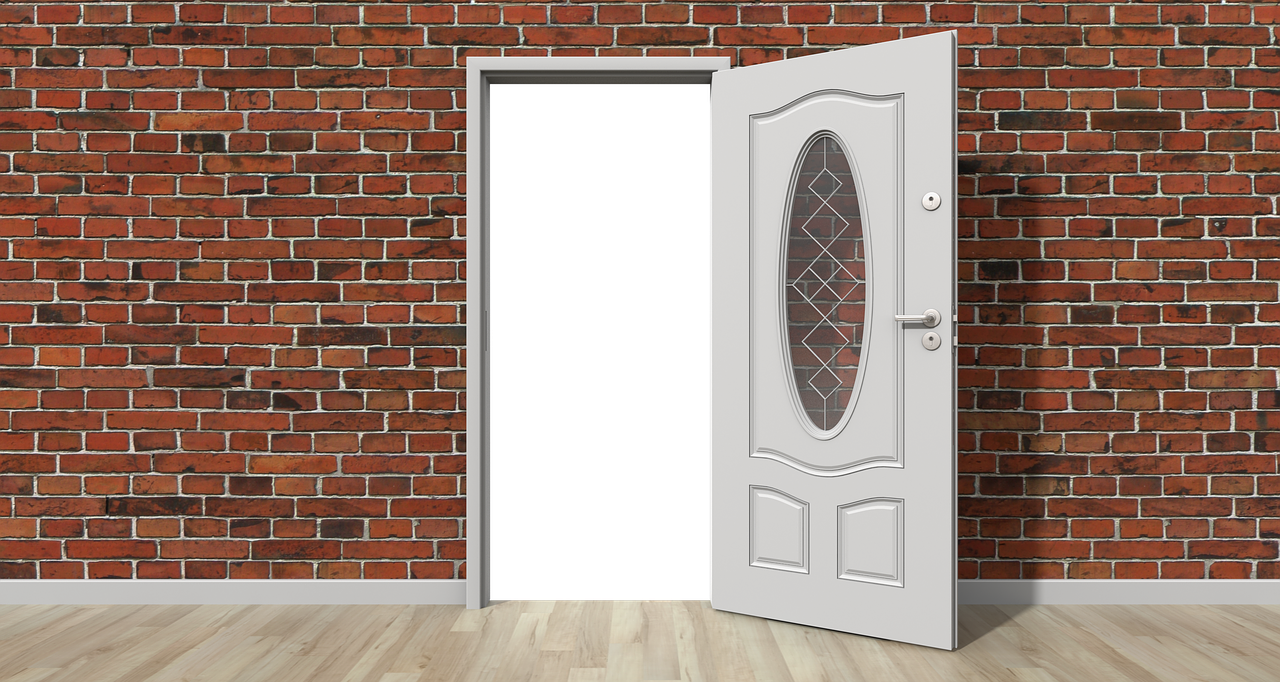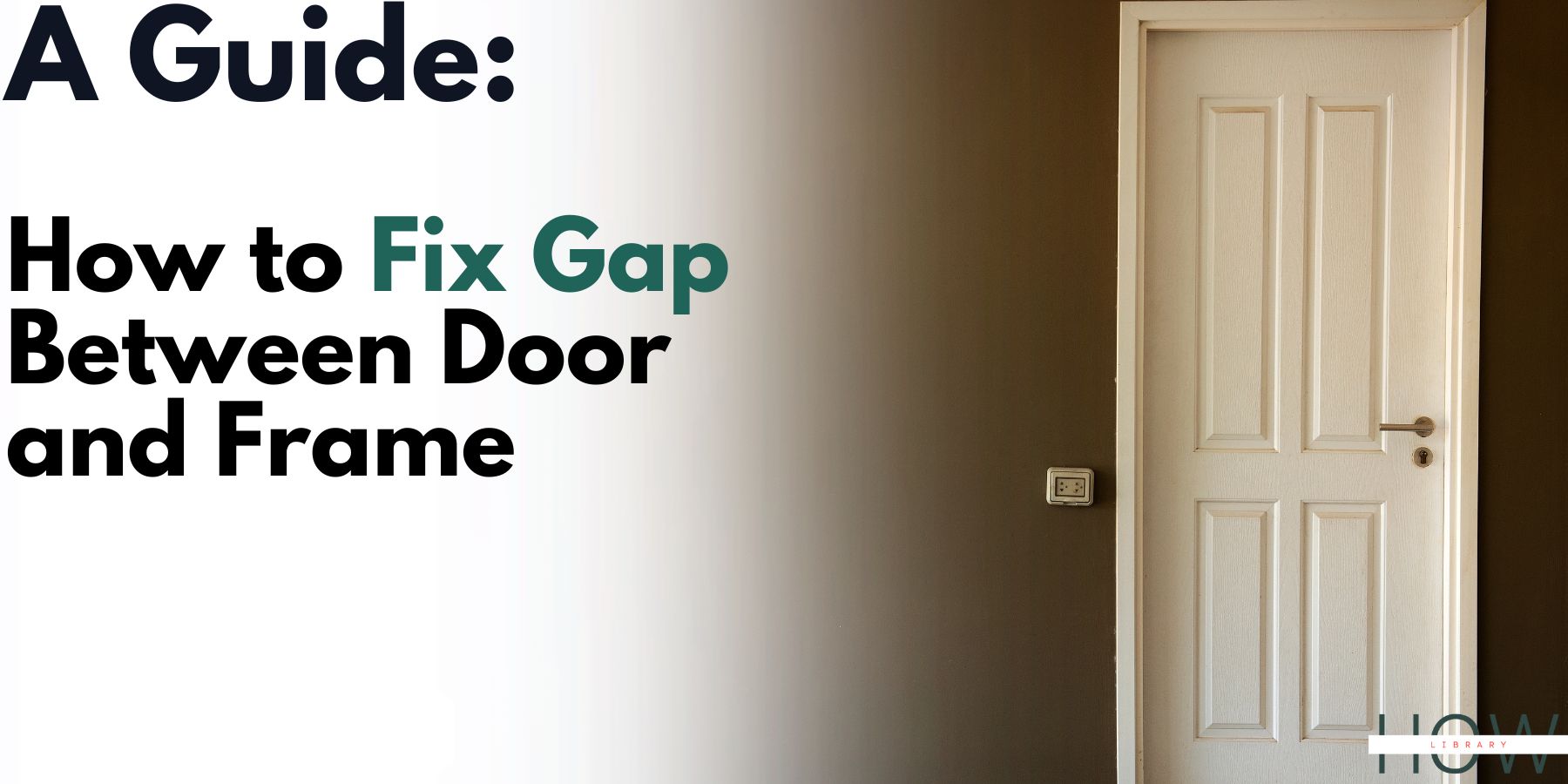The first step in fixing the gap between your door and frame is to determine what type of material needs to be addressed. If it’s wood, you will need to fill the gap with wood filler and then sand it down until it is flush against the door frame. You can use a putty knife or chisel to help you spread the wood filler evenly across the length of the gap.
If you are dealing with metal frames, you may need to apply some sealant or caulk around the perimeter of the door frame before filling in any gaps. This will ensure that moisture does not seep into your home. Once this is complete, use a tube of epoxy designed for metal, plastic or composite materials to fill in the gap.
If you are dealing with a larger gap, you may need to use foam weatherstripping or expandable insulation foam. This type of material will be able to fill in large gaps and is designed to remain flexible over time. Simply cut it into strips and press them into place before securing with a few nails.
Finally, if your door frame is made from vinyl or PVC, you can use a tube of sealant specifically designed for this material. Simply apply it along the length of the gap and allow it to dry completely before closing the door.
Depending on the size of your gap between your door and frame, you may have to do some measuring to find the right way to fix it. Regardless of whether you want to install a door sweep or use weatherstripping, it is important to be able to measure the width of the gap.
Filling the gap with weatherstripping
Adding weatherstripping to the gap between the door and frame is an inexpensive solution to a common home problem. You can use self-adhesive tapes to make the job easy and quick.
There are several different types of weatherstripping available. Some are made of felt, foam, or metal. The type you choose will depend on your needs. If you live in a climate that has high humidity, felt-based weatherstripping will not be a good choice. Metal weatherstripping is more durable.
Before you begin, you will need to measure the size of the gap between door and frame. This should be done with a measuring tape on either the interior or exterior of your home. The gap should be no more than an eighth of an inch wide.
The weatherstripping kit you purchase will come with three pieces. You will need to cut these pieces to fit the gap between door and frame. The top piece should be placed on the top side of your door, and the side pieces should be nailed along the sides of the door frame. You can use a fine-tooth saw to cut the top angles. Sandpaper can also be used to fine-tune the angles.
If your door has a gap at the top of the door, you can fill it with foam or vinyl. You can also buy adhesive foam strips that attach to the door jamb. The strips should be cut to fit the gap and nailed in place.
If your door is not a standard size, you may need to add extra weatherstripping to the gap. You can measure your door and determine its width and length. Use a tape measure to mark the distance between the top of the door and the frame.
The bottom of your door should be measured as well. If your door is not a standard size, the gap may be larger or smaller than the door’s width. This can cause air drafts and energy loss. If you find the gap is larger than an eighth of an inch, you may need to add more weatherstripping.
Installing a door sweep
Putting in a door sweep can help you seal a gap between your door and the frame. This gap can be a problem for homeowners, allowing drafts and moisture to enter your home. It can also lead to higher energy bills.
When installing a door sweep, make sure to follow the instructions provided by the manufacturer. The best way to determine if your gap is small enough is to measure the door and frame. If it is too large, it may be time for a replacement door. If the gap is small, it can easily be fixed with a few simple steps.
Before installing a door sweep, be sure to remove old weatherstripping from the door. A lightly damp rag can be used to clean the frame. This will make the new materials stick well.
The most important part of installing a door sweep is to make sure you are not putting it too low. You want to be able to rest the sweep against the threshold when it is closed. You should also make sure that the sweep is aligned to the base of the door.
If the gap is larger, you may want to consider installing a wrap-around door sweep. These sweeps are designed to curve around the bottom of the door. This makes them easier to install.
Door sweeps come in metal, vinyl, and felt materials. These are great for all types of floors. They provide extra protection against drafts, moisture, and pests.
When installing a door sweep, you must decide whether you want to use the slide-on or the staple-on type. The slide-on type is the simplest to install. The staple-on type requires you to remove your door and frame to attach the sweep. It’s also a little more complex. You’ll also need to drill holes to attach the sweep.
It’s not a bad idea to test the new door sweep by putting it in place and opening and closing the door. If it works well, you can leave it in place. If it doesn’t, you may want to install end caps.
Using a finished nail gun

Using a finish nail gun is a great way to fix the gap between your door and the frame. It allows you to drive sturdy and long nails with ease. However, there are several safety precautions to keep in mind before you begin.
The first thing you want to do is to ensure you have the correct tool. There are several variations of nail guns available, so you’ll want to make sure you choose one that’s right for the job.
You’ll also want to consider how safe you are using the tool. Make sure you wear appropriate safety eyewear and clothing. Likewise, you’ll want to avoid hitting anything hard with your nail gun.
Another thing to consider is how much power you need. Depending on your needs, you can choose from pneumatic or battery-powered nail guns. Pneumatic models are a lot lighter and more convenient to use. However, they require an air compressor, whereas battery-powered nail guns are powered by your own battery.
When you’re using a finish nail gun, make sure you align the gun with the path of your nail. You can adjust the depth of the nail using the depth selector on the gun. If you’re not sure where to find this, consult the owner’s manual.
Another safety feature of nail guns is the “bump mode.” This allows you to fire a nail every time the safety tip is depressed. It’s not recommended for do-it-yourselfers, but professional roofers often use this feature.
The best way to make sure you get the most out of your finish nail gun is to learn to use it correctly. You can practice using the tool on scrap wood to get the hang of it. You can also adjust the depth of your nails after you’ve learned how to operate the tool.
Another benefit of using a nail gun is that you’ll be able to drive nails exactly where you want them. The tip on the nail will be blunt, so you’ll avoid splitting your casing when you’re driving a nail through the material.
Using a finish nail gun to fix the gap between your door and the framing is a great way to improve your home’s appearance. However, be sure to follow the safety precautions mentioned above to ensure you don’t hurt yourself or your loved ones.
Calculating the gap width
Whether you’re installing a new door or replacing a door you’ve had for years, it’s important to get a good idea of how much gap to leave between the door and frame. This will allow you to install a well-balanced door that will remain silent and motionless.
First, you’ll need to take measurements. Measure the width, height and depth of the doorway, as well as the thickness of the walls and door frame. The length of the opening is not as important as the width.
For a standard sized door, you’ll need to leave a 2 to 2.5 cm gap on the sides of the door and a 1 to 1.5 cm gap on the top and bottom of the door. In addition, you’ll need to leave a gap of at least 5 mm between the door and frame. This will allow for a small assembly gap and provide adequate space for the leaf to attach to the door or jamb.
Generally, you should use a door product label to determine the main dimensions of your door. If you don’t have a door product label, it’s a good idea to hire a professional to take measurements.
If your door is fire rated, you will need to add an additional 6mm to the door width and thickness. You should also allow 3mm on the sides of the hinges.
It’s also important to know the thickness of the wall where the door will be installed. If your door isn’t certified, you’ll have to re-seal the gap with glue. If you don’t have a certified door, you may be able to use an extension to compensate for the free space.
If you’re installing a foaming door, you’ll need to take measurements of the frame. Foaming doors cause pressure on the frame and cause distortion. You’ll also need to make adjustments to your building level.
You’ll also need to measure the height of the rough opening. This height is usually 2 to 3 inches taller than the door slab. It will also include a 1/2-inch gap for shims.
How to Fix Gap Between Door and Frame
The first step in fixing the gap between your door and frame is to determine what type of material needs to be addressed. If it’s wood, you will need to fill the gap with wood filler and then sand it down until it is flush against the door frame. You can use a putty knife or chisel to help you spread the wood filler evenly across the length of the gap.
If you are dealing with metal frames, you may need to apply some sealant or caulk around the perimeter of the door frame before filling in any gaps. This will ensure that moisture does not seep into your home. Once this is complete, use a tube of epoxy designed for metal, plastic or composite materials to fill in the gap.
If you are dealing with a larger gap, you may need to use foam weatherstripping or expandable insulation foam. This type of material will be able to fill in large gaps and is designed to remain flexible over time. Simply cut it into strips and press them into place before securing with a few nails.
Finally, if your door frame is made from vinyl or PVC, you can use a tube of sealant specifically designed for this material. Simply apply it along the length of the gap and allow it to dry completely before closing the door.
FAQ
What is causing the door gap?
The most common causes of door gaps are sagging doors, uneven floors, and too short doors.
Can I fix a door gap by just adjusting the hinges?
Adjusting the hinges can help fix a gap at the top of the door caused by a sagging door, but it may not be enough to fix a gap caused by an uneven floor or a door that is too short.
Do I need to remove the door from the hinges to fix a door gap?
Removing the door from the hinges is not always necessary, but it can make it easier to level the door and add shims.
What kind of wood shims should I use for fixing a door gap?
You can use any wood shim, but it is recommended to use thin and flexible shims as they are easier to work with and less likely to crack.
How can I fix a gap at the bottom of the door caused by an uneven floor?
To fix a gap at the bottom of the door caused by an uneven floor, you will need to use wood shims to level the door. Place the shims under the door, using a level to ensure that the door is level.
What should I do if a sagging door causes the gap?
If a sagging door causes the gap, you should add wood shims to the hinge side of the door to level it. It may also be a good idea to reinforce the door frame with additional screws to prevent the door from sagging in the future.

